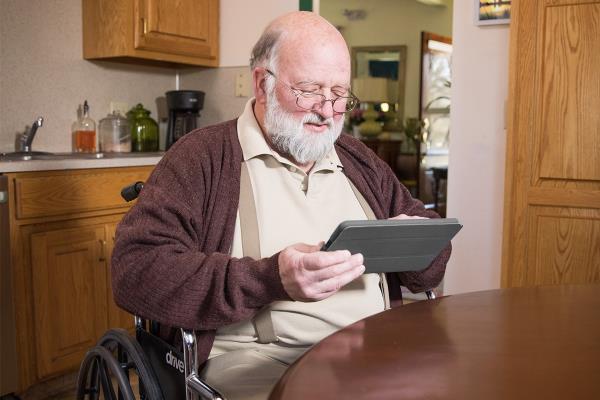Older adults across the country face the threat of wildfires. In the United States, nearly 45 million homes border or intermingle with wildlands putting 72,000 U.S. communities at risk.
If you live in an area at risk for wildfires, regularly review your safety plans on behalf of the senior in your life.
Because aging adults may be hearing impaired, have mobility issues or other underlying conditions like heart disease and COPD, they are more at risk from fire death than the general population. According to the U.S. Fire Administration (USFA), people ages 85 or older have the highest fire death rate (39.5) and they’re 2.6 times more likely to die in a fire than the total population.
“It is important to consider fire safety for all older adults, especially those who live in areas that are at higher risk of wildfires,” says Home Instead Gerontologist and Caregiving Advocate Dr. Lakelyn Hogan Eichenberger, PhD. “Have a plan in place and revisit the plan each year or in peak wildfire seasons to be sure your plan still meets the safety needs of the older adult.”
Before a wildfire, take steps recommended by the Environmental Protection Agency and Home Instead to make sure older adults in your life are prepared.
10 Wildfire Preparedness Tips for Seniors & Family Caregivers
- Check with the doctor about what to do during smoke events for an older adult with heart or lung disease, including asthma. Have a plan to manage the condition.
- Stock up so no one has to go out when it’s smoky. Have several days of medications on hand. Buy groceries that do not need to be refrigerated or cooked because cooking can add to indoor air pollution.
- Buy a portable air cleaner. Make sure it has high efficiency HEPA filters and it is the right size for the room.
- Create a “clean room” in the home. Choose a room with no fireplace and as few windows and doors as possible, such as a bedroom. Use a portable air cleaner in the room.
- Know how to get alerts and health warnings, including air quality reports, public service announcements (PSAs), and social media warnings of high fire risk or an active fire. Purchasing an emergency radio may also be a good idea in case of a power outage.
- Ask an air conditioning professional what kind of high-efficiency filters to use in the home’s system and how to close the fresh-air intake if the central air system or room air conditioner has one.
- Have a supply of N95 respirators and learn how to use them. They are sold at many home improvement stores and online. (Check with a doctor ahead of time to make sure the respirators are a good choice for the aging adult in your life.)
- Organize important items ahead of time, including financial and personal documents. Pack an emergency kit with prescription medicines and important documents for quick access. Keep must-have items such as glasses, hearing aids and medical supplies nearby in case of emergency.
- Know evacuation routes, both out of the home and out of the neighborhood, and where to go if evacuation is required. Be sure to consider the older adult’s mobility and pets. An evacuation plan for an upstairs room may require a fire escape ladder. Consider moving your loved one to a ground floor if this is not feasible. Finally, be sure to share the pan with your aging loved one and any caregivers coming into the home.
- Consider in-home care from a company such as Home Instead, whose Care Professionals can serve as a second set of eyes and ears to help keep a senior safe. In-home caregivers can help look out for a vulnerable aging adult, particularly those living alone.
How to Create an Evacuation Plan for Older Adults
In creating an evacuation plan, the USFA recommends the following for aging adults.
- Ensure easy and quick access to assistive devices like a wheelchair or a cane.
- Keep eyeglasses, hearing aids, keys and a phone within reach or next to a bed.
- Know two ways out of every room. Practice using both ways. If an older adult uses a walker or wheelchair, be sure they can go through the doorways.
- Remove any items that may block the way out of the room or home. It might also be a good time to review an older adult’s Home Safety Checklist.
- Discuss the planned fire escape route with family and neighbors. Contact the building manager or fire department to discuss the plan if extra help may be needed to escape.
- Practice home fire escape drills twice a year.
- The fire department can help you with an escape plan. Ask emergency providers to keep your special needs information on file.
- Elderly homeowners should consider installing interior and exterior sprinkler systems.
- For anyone who suffers from hearing loss, install smoke alarms with flashing lights or vibrating signals.
For more general fire safety tips, review the Fire Safety Outreach Materials for Older Adults, and Fire Safety Checklist for Caregivers and Older Adults.



